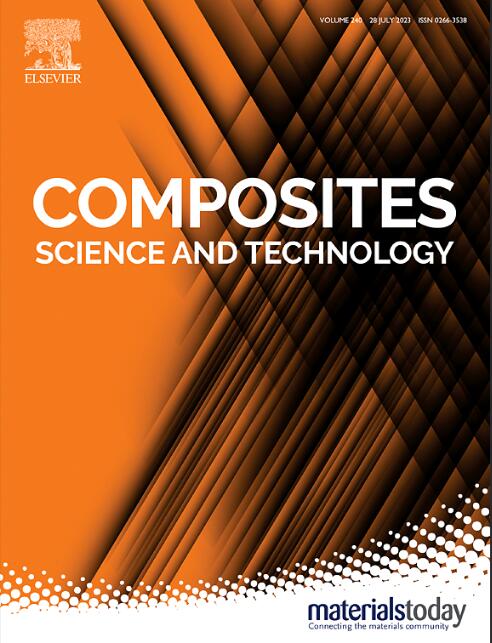Hierarchical mxene/Fe3O4/cellulose nanofiber composites with layer-by-layer architecture for high-performance electromagnetic interference shielding
IF 8.3
1区 材料科学
Q1 MATERIALS SCIENCE, COMPOSITES
引用次数: 0
Abstract
The proliferation of electronic devices has made electromagnetic interference (EMI) shielding increasingly critical for both device performance and human health protection. Here, we demonstrate a hierarchical composite film that achieves exceptional EMI shielding through the synergistic integration of magnetic nanofibers and MXene nanosheets. By combining electrospinning and layer-by-layer assembly, we fabricate a composite structure where Fe3O4-loaded cellulose/PAN nanofibers alternate with Ti3C2Tx MXene layers, creating multiple heterogeneous interfaces for enhanced electromagnetic wave attenuation. The engineered architecture promotes multiple electromagnetic loss mechanisms through interface polarization, magnetic losses, and multiple internal reflections. The optimized composite exhibits remarkable performance metrics: achieving a thickness-specific shielding efficiency of 118 dB/mm at just 0.18 mm thickness, significantly surpassing current commercial standards. At 0.64 mm thickness, the electromagnetic shielding effectiveness reaches 33.2 dB, effectively blocking over 99.9 % of electromagnetic radiation. Notably, the composite demonstrates exceptional mechanical durability, retaining 96.8 % of its shielding effectiveness after 300 bending cycles. The integration of renewable cellulose and magnetic components with highly conductive MXene not only enhances electromagnetic wave attenuation but also promotes environmental sustainability. This combination of ultra-thin profile, superior shielding performance, and mechanical flexibility, coupled with eco-friendly material selection, provides a promising pathway for EMI protection.

求助全文
约1分钟内获得全文
求助全文
来源期刊

Composites Science and Technology
工程技术-材料科学:复合
CiteScore
16.20
自引率
9.90%
发文量
611
审稿时长
33 days
期刊介绍:
Composites Science and Technology publishes refereed original articles on the fundamental and applied science of engineering composites. The focus of this journal is on polymeric matrix composites with reinforcements/fillers ranging from nano- to macro-scale. CSTE encourages manuscripts reporting unique, innovative contributions to the physics, chemistry, materials science and applied mechanics aspects of advanced composites.
Besides traditional fiber reinforced composites, novel composites with significant potential for engineering applications are encouraged.
 求助内容:
求助内容: 应助结果提醒方式:
应助结果提醒方式:


